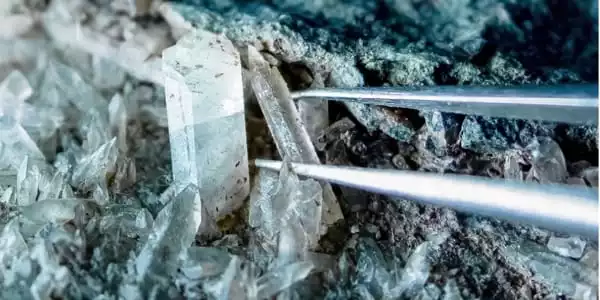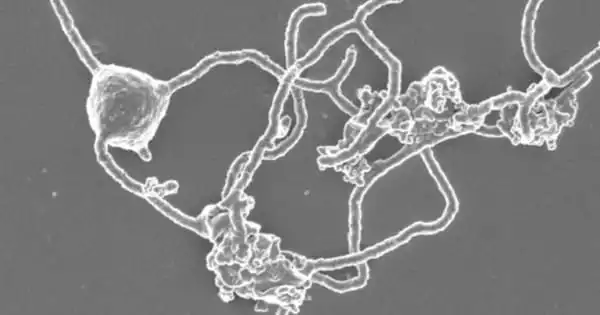According to a paper correlating Earth’s deep biosphere with geologic history, Precambrian cratons – some of Earth’s oldest rocks – were uninhabitable for microbes for much of their existence, with the longest period of habitability not much more than a billion years, and many only for the past 50 million to 300 million years.
Deep, dark fractures reaching deep into Earth’s oldest rocks may appear to be as hostile to life as outer space, but some estimates suggest that microbes living deep in the Earth’s crust account for the majority of microbial life. These underground lifeforms, which comprise the deep biosphere, could account for up to 20% of all biomass on Earth.
According to the authors of a new study that looks at how deep habitats changed during Earth’s tumultuous past, these ecosystems host-microbial lineages that are of interest for understanding the origin and evolution of life on our planet but remain the least explored and understood ecosystems on Earth.
“Understanding the history of the deep biosphere can provide insight into the evolution of life on Earth,” said Peter Reiners, a geosciences professor and associate dean of the University of Arizona College of Science, who co-wrote the paper with Henrik Drake, an associate professor at Sweden’s Linnaeus University. “This necessitates an understanding of the complex evolution of habitable conditions in these underground environments, but such an assessment had not previously been presented.”
We can reconstruct their thermal histories through the ups and downs of burial and erosion over time by combining thermochronology results from several different radioisotopic dating systems. This approach provides context for prospecting and interpreting the little-explored geologic record of Earth’s cratons’ deep biosphere.
Peter Reiners
While microbes have been found as deep as 3 miles below the Earth’s surface, and possibly deeper, very little is known about how the deep biosphere has evolved over geologic time, and how modern microbes are related to their subsurface ancestors.
Reiners and Drake concentrated on Precambrian cratons, some of the oldest rocks still present today, to determine where and when subsurface microbes should have been active on Earth hundreds of millions to billions of years ago. The findings of their study, published this week in the Proceedings of the National Academy of Sciences, show that many cratons were uninhabitable for microbes for much of their existence, with the longest period of habitability being only a billion years, and many cratons only being habitable for the last 50 million to 300 million years.
“We demonstrated that because microbial habitability generally requires temperatures less than about 100 degrees Celsius (212 degrees Fahrenheit), we expect to find evidence of subsurface microbial life older than about a billion years in only a few places,” Reiners explained. “Just because these rocks are really old, and the fluids in them may be old, doesn’t mean they could’ve supported life until recently when they were eroded very close to the surface.”

Microorganisms live in Precambrian cratons and get their energy from nutrient consumption, including sparsely available organic carbon, as well as chemical reactions between fluids and rocks. According to Drake and Reiners, subsurface bacteria and archaea (single-celled prokaryotes similar to bacteria), which now account for up to 90% of all microbial life on Earth, probably made up an even larger proportion of total life hundreds of millions to billions of years ago.
“Their evolution, particularly the evolution of their metabolisms — how they get energy and what chemical elements they ‘eat’ and ‘poop’ — provide key insights into the evolution of all other critters,” Reiners said, adding that some researchers believe life began beneath the Earth’s surface.
The researchers employed a combination of deep ancient life records discovered within craton fractures and recent advances in intermediate- and low-temperature thermochronology, a technique that allows scientists to reconstruct the temperature histories of rocks. Rocks may have been subjected to higher temperatures and pressures when sediments accumulated on top of them, only to be brought closer to the surface and into more habitable conditions when those sedimentary layers eroded away.
“We can reconstruct their thermal histories through the ups and downs of burial and erosion over time by combining thermochronology results from several different radioisotopic dating systems,” Reiners said. “This approach provides context for prospecting and interpreting the little-explored geologic record of Earth’s cratons’ deep biosphere.”
The study sheds new light on the evolution of the deep biosphere by determining when these rock environments became habitable and, in some cases when they were buried and sterilized again.
“Cratonic rocks formed billions of years ago, often deep within the crust, at temperatures too high for life,” Reiners explained. “It wasn’t until much later, after erosion, that the currently exposed rocks reached temperatures in the crust that was habitable.”
According to Drake, thermochronology can help researchers identify areas where they can look for the oldest records of subsurface microorganisms on Earth. “Eastern Finland, Greenland, and possibly parts of the Canadian shield look especially interesting, with habitable conditions dating back a billion years or more,” he says. “Those cratons are excellent candidates for further research into deep microbial evolution.”















